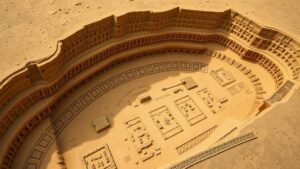How explorers tackle the challenge of identifying false leads in treasure hunts.
How Explorers Tackle the Challenge of Identifying False Leads in Treasure Hunts
The excitement of treasure hunting often shines brightly, fueled by tales of lost fortunes and hidden artifacts. But, the path to discovery is frequently riddled with challenges, particularly the presence of false leads. To navigate these treacherous waters, explorers employ a variety of techniques and methodologies that help distinguish between genuine clues and deceptive distractions.
Understanding the Context of Treasure Hunts
Treasure hunting is steeped in history, often dating back to ancient civilizations. For example, the search for the legendary El Dorado, a fabled city of gold sought after by Spanish conquistadors in the 16th century, exemplifies the allure and pitfalls of treasure hunting. Much like El Dorado, many treasures are surrounded by myths that can lead explorers astray.
Evaluating Historical Documentation
One of the most effective ways to filter out false leads is through the rigorous evaluation of historical documents. Explorers must sift through maps, diaries, and journals that span several centuries.
- Primary Sources: Documents from the time of the treasures rumored existence can provide crucial context. For example, Captain Kidds logbooks from the late 17th century offer insights into his treasure hunts in the Caribbean.
- Archaeological Evidence: Excavations can validate or disprove historical accounts. In the early 20th century, the recovery of gold coins at the site of a pirate shipwreck off the coast of Florida confirmed long-held beliefs about buried treasure.
The Role of Modern Technology
Todays explorers leverage technology to sift through potentially misleading information effectively. Tools such as GIS (Geographic Information Systems) and satellite imaging improve the ability to analyze locations and their historical significance.
- GIS Mapping: This technology allows treasure hunters to overlay historical maps with current geographical data, identifying discrepancies that could indicate false leads.
- Ground Penetrating Radar (GPR): GPR can detect underground structures and artifacts without excavation, saving time and providing clearer insights on whether a site is worth investigating.
Networking with Experts and Local Communities
Building a network of historians, archaeologists, and local informants can be invaluable. Local communities often hold undocumented knowledge or folklore that might provide essential context to a treasure hunt.
- Collaborations: Working with academic institutions can yield peer-reviewed research and expert advice, which helps ensure that leads are not just based on hearsay.
- Community Engagement: Local tales may contain kernels of truth; for example, lore about sunken ships in the Great Lakes often leads to scientifically backed searches that reveal historical accidents.
Critical Thinking and Logical Deduction
Explorers rely on critical thinking and logical deduction when faced with multiple leads. Analyzing data helps them discern which leads are plausible and which are likely fabrications.
- Cross-Referencing: By comparing various sources, explorers can often identify contradictions that point toward false leads. For example, if multiple accounts suggest a treasure is in the same location but provide differing details, the likelihood of one being true decreases.
- Statistical Analysis: Using statistical methods, explorers can quantify the likelihood of accuracy of various leads. For example, researchers might analyze historical data to ascertain frequencies of treasure finds in particular regions.
Real-World Applications: Successful Treasure Hunts
Several recent treasure hunts demonstrate successful strategies in combating false leads:
- Forrest Fenn’s Treasure: The mystery surrounding the treasure chest hidden by art dealer Forrest Fenn in 2010 highlighted how many hunters pursued false leads. After years of searching, it was ultimately discovered in Wyoming after thorough analysis of Fenns poem, underscoring the importance of critical thinking.
- Shipwreck Discoveries: The recovery of the Spanish galleon Nuestra Señora de Atocha, which sank in 1622, showcased how historical documentation and modern technology converged to validate leads about its location.
Actionable Takeaways
Explorers can benefit from several key strategies to tackle the challenge of false leads in treasure hunts:
- Invest time in thorough research and validation of historical documents.
- Use technology effectively to analyze potential sites and eliminate false leads.
- Network with experts and local communities to gather diverse insights.
- Apply critical thinking and statistical analysis to verify leads logically.
To wrap up, treasure hunting is an intriguing blend of myth, history, and modern science. While false leads can pose significant challenges, the collaboration of historical research, technology, community engagement, and critical thinking equips explorers with the tools necessary to pursue their fortunes more effectively.


